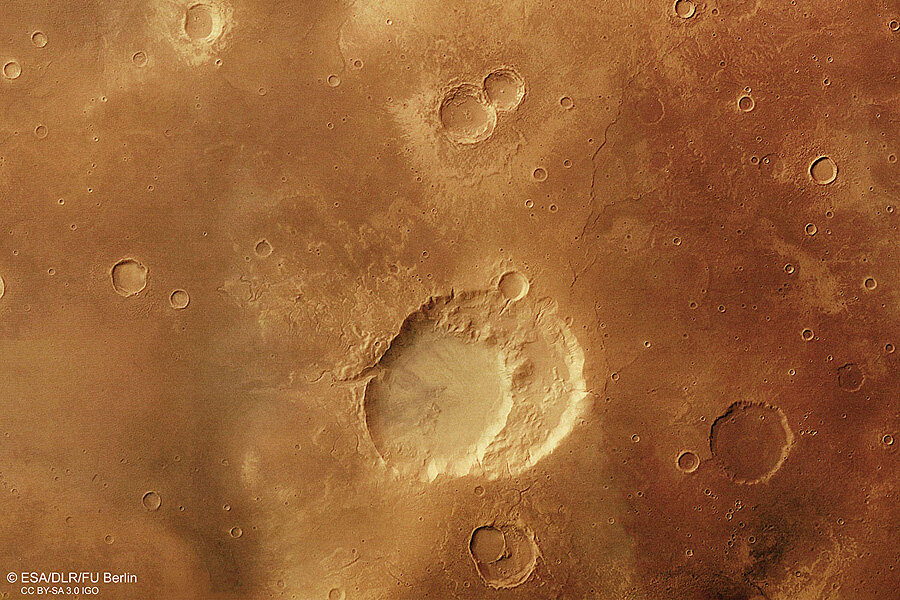Did Mars once have supervolcanoes?
Loading...
Did supervolcanoes once erupt on Mars?
Look at the photo above, captured in November 2014 by a high-resolution camera aboard the European Space Agency's Mars Express orbiter as it passed over the Red Planet's Arabia Terra region, and you'll see what appear to be several craters. The largest of these is Siloe Patera, a crater with another crater nested inside of it. Siloe Patera measures 40 kilometers by 30 kilometers, and is thought to be some 1750 meters deep, according to the ESA.
But an analysis of photos suggests that this Siloe Patera was caused not by a meteor, but by a collapsing supervolcano.
On Earth, a supervolcano is defined as a volcano that can produce at least 1,000 cubic kilometers of volcanic materials in a single eruption. One of the most famous examples in the Western Hemisphere is the Yellowstone caldera.
The term "supervolcano" is generally favored by the media and has begun to be used by geologists only recently, notes NASA.
Supervolcanoes occur when magma is trapped below the surface, causing huge amounts of pressure to build. They erupt suddenly and do not have the characteristic sloping sides of other volcanoes. Their shape makes it difficult for scientists to identify them, especially millions of years after they have erupted.
The ESA explains that the Siloe Patera features two depressions with steep-sided walls, indicating that the area may have collapsed when the magma pressure below the surface was released.
Impact craters, unlike the Siloe Patera, are characterized by a central peak and uplifted crater rims.
Volcanoes may have played a role in regulating the Red Planet's temperature. Space.com reports that Mars's dusty atmosphere reflects sunlight and keeps the red planet cool. When supervolcanoes erupt, they spew ash into the atmosphere, producing a dust/ash combination that is less reflective than Mars's natural atmosphere. As the atmosphere absorbs more sunlight, the climate becomes warmer.
According to researchers, "models of the early Martian atmosphere suggest that, all in all, volcanic eruptions would heat the equatorial region of Mars enough for water to flow."








